What is a throttle body?
A throttle body is a key component of every gasoline engine. A throttle body is connected to the throttle pedal and it dictates how much air is coming into your engine. Without a throttle body it would be impossible to modulate engine power. On top of this, your throttle body also works to ensure a smooth and stable idle, both when the engine is hot and cold.
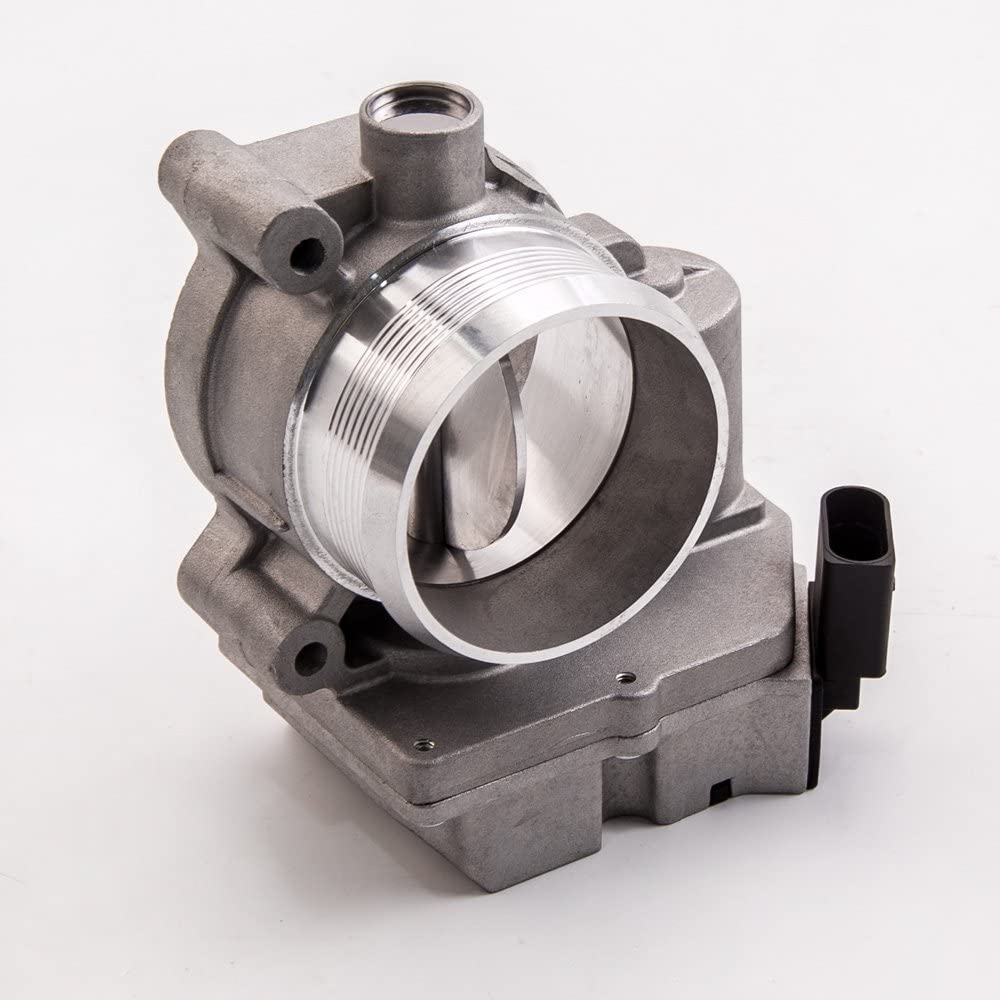
How does a throttle body work?
A throttle body is essentially a large butterfly valve. A circular plate attached to shaft. When the shaft turns the butterfly valve opens or closes. The more the valve opens, the more air is coming into the engine. The engine has multiple ways to measure the quantity of air coming into it, and based on the amount of air the engine’s ECU decides how much fuel should be injected into the engine. More air means more fuel which results in a more powerful combustion and your car accelerating. The engine measures the amount of air coming into it either with a MAP (manifold absolute pressure) sensor, MAF (mass air flow) sensor or an AFM (air flow meter). Each of these three different sensor types work differently but serve the same purpose, and that is to tell the engine’s ECU how much fuel is needed to produce an optimal air fuel ratio for power or economy or a balance of both. Based on their construction and mode of operation there are two different kinds of throttle bodies:
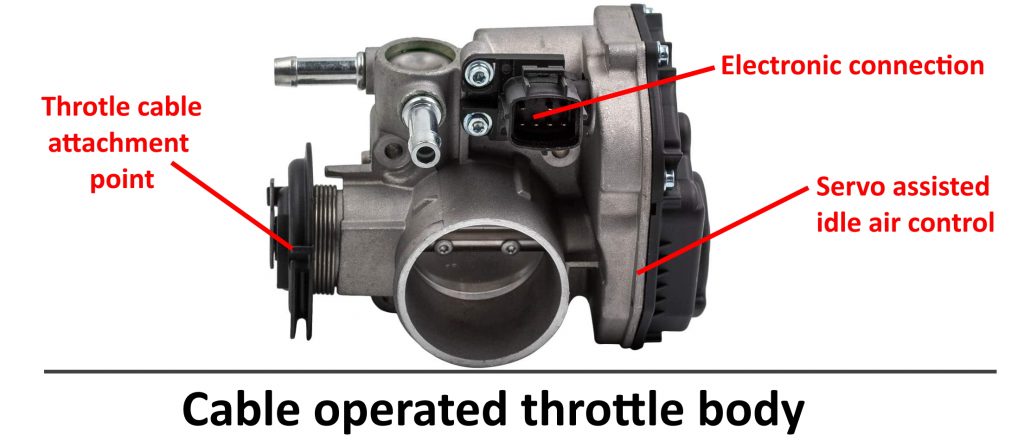
Cable operated throttle bodies
A cable operated throttle body has a physical connection between the throttle pedal and the throttle body itself. The connection is made using a throttle cable which is attached to the end of the throttle pedal and on a wheel connected to the butterfly shaft of the throttle body. When you press on the throttle pedal you actually pull on the cable causing the butterfly valve to open. Cable operated throttle bodies are simple devices and do their job fine, but there are several downsides. A throttle body must operate differently when the engine is hot and cold and must maintain different positions for idling during hot and cold operation. However it is impossible to modulate the resting position of the throttle body using a throttle cable. This is why cable operated bodies must have separate systems for the IACV (idle air control valve) and the idle air adjustment. These can be mechanical, via screws or vacuum hoses, or they can be electronic and use servo motors to adjust the idle air control. It is never a good idea to change the stock mechanical idle air screw settings unless you are completely certain and have experience with doing this.

Electronic (drive by wire) throttle bodies
An electronic throttle body has no cable connection between the throttle body and throttle pedal. Instead the throttle pedal only has an electronic, or wire connection to the throttle body and simply sends a throttle pedal position signal to tell the throttle body how much it should be opened. An electronic throttle body is completely operated by a servo motor connected to the butterfly shaft. This is a more elegant solution because the same servo motor can receive signals from various inputs and operate not only the throttle opening as dictated by the throttle pedal, but also all idle air control using the same servo motor. This makes electronic throttle bodies more compact and much more efficient.
How to choose the right throttle body for your car?
Choosing the right throttle body on the MaXpeedingRods is very simple. Simply find your vehicle make, model, engine type, and year of manufacture and find a suitable throttle body replacement. If you’re unsure of the exact throttle body needed you can reach out to us via our website www.maxpeedingrods.com and we will assist you in choosing the right throttle body. It’s a good idea to have your vehicle VIN ready so part number suitability can be confirmed.
If you’re building a performance-oriented engine then it’s often a good idea to increase the size of your throttle body to one of a larger diameter. However, this should only be done if you have done other significant modifications to the engine to justify a larger throttle body bore that can move more air into the engine. MaXpeedingRods also carries performance-oriented throttle bodies for popular engine platforms
MaXpeedingRods throtte body features
- All MaXpeedingRods throttle bodies are accurately made and assembled to meet or exceed OEM standards and specifications.
- All MaXpeedingRods throttle bodies have been tested for proper operation and smooth and accurate throttle plate movement and transition from idle to all positions in the throttle opening range.
- All MaXpeedingRods throttle body housings have been carefully cast and inspected for faults or cracks. They have also been accurately machined to ensure a perfectly smooth throttle body bore for optimum performance and economy.
- MaXpeedingRods throttle bodies feature high quality throttle position sensors and servo motors to ensure a long life and accurate and smooth throttle operation that is completely free of jerking or erratic behavior.
Faulty throttle body symptoms?
A faulty throttle body on an engine can be a very frustrating experience and can cause many irritating symptoms.
- The vehicle is not starting or has difficulty starting
A completely failed idle air control valve or throttle servo motor can cause a no start condition, especially in colder weather. This happens because the throttle body does not open slightly to allow extra air in to help the engine start. You can verify if your throttle body is operating or not by removing the intake ducting connected to the throttle body and turning the ignition into the first start position (do not crank the engine) as you do this the throttle body should make a very small movement to prepare for engine starting. You can also try pressing the throttle pedal to see if the throttle plate is moving (some vehicles will not operate the throttle plate unless the engine is running). - Jerky or erratic engine operation
A failing throttle body will fail to properly respond to throttle pedal inputs and will cause the engine to perform poorly. A faulty throttle position sensor will also likely confuse the ECU resulting in the wrong air fuel mixture and erratic operation. This situation must be remedied as soon as possible as it can be a driving and safety hazard. However, other engine conditions can also cause erratic operation so a faulty throttle body must be confirmed with a diagnostic tool or direct inspection by measuring the electronic resistance between the throttle positions sensor connector terminals. - Poor performance
A faulty throttle body can lead to poor performance and slow acceleration. But in this case the likely culprit is a dirty throttle body that has been clogged up with carbon deposits. This is especially common on high mileage engines or ones running on low quality fuel. In most cases getting a throttle body cleaner and a rag and cleaning out the throttle body thoroughly can remedy this condition. It’s often easier and safer to clean the throttle body when it’s removed from the engine.
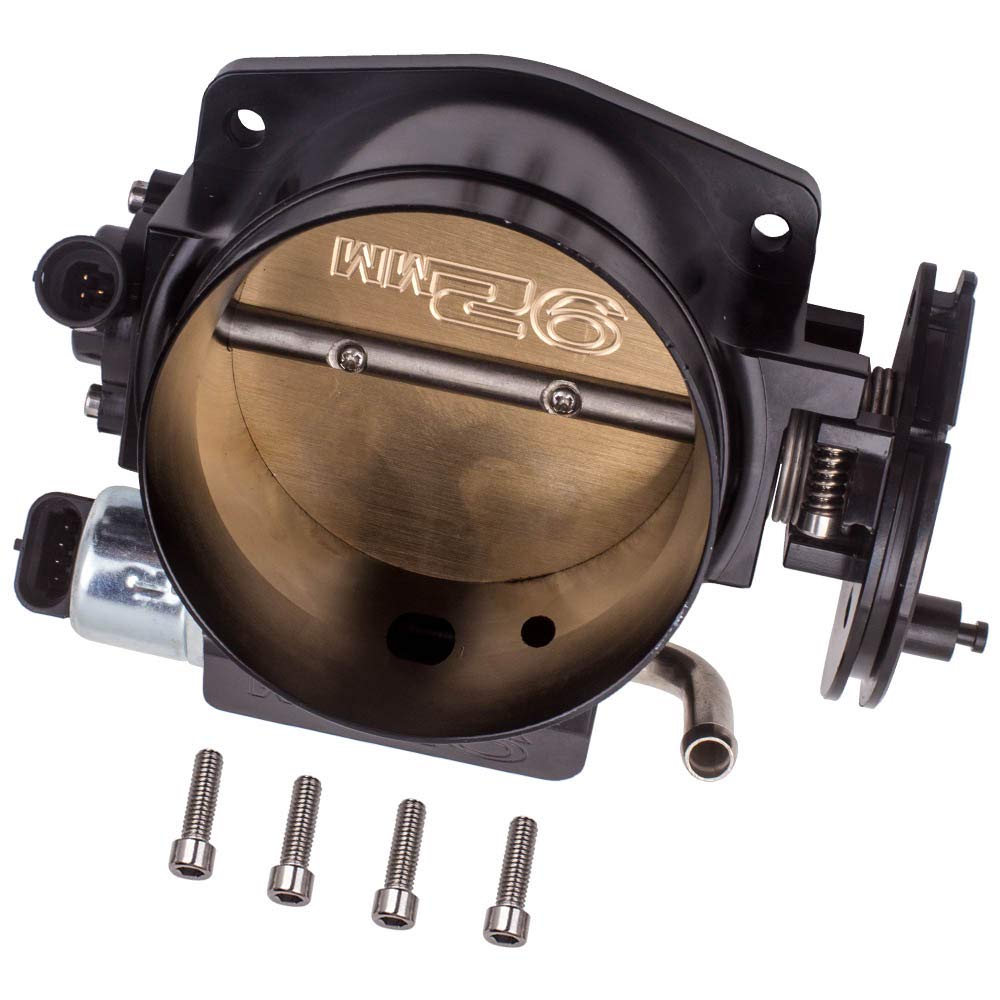
How to replace a throttle body?
Replacing a throttle body is a relatively simple task and can be performed with pretty basic tools. The throttle body is always located a the entrance to the intake manifold of the engine and is fastened by 3 or 4 bolts that are at the corners of the throttle body
The first thing you must do is remove all intake piping and ducting attached to the throttle body opening. Intake piping may be made from rubber and flexible in which case it’s often held in by hose clamps or it can be solid and made from hard plastic or metal in which case it’s either bolted down or attached using some other methods such as various kinds of clips. Once the intake piping is removed disconnect all electronic connections from the throttle body. Most newer throttle bodies only have a single electronic connection, but some older models have several connections and these can include the throttle position sensor, the IACV servo and more. Once this is done the last step is to unbolt the throttle body from the intake manifold. Don’t forget to replace the throttle body gasket every time you’re replacing a throttle body. For electronic throttle bodies a diagnostic tool will be often be needed to perform the idle and volume relearn procedure.
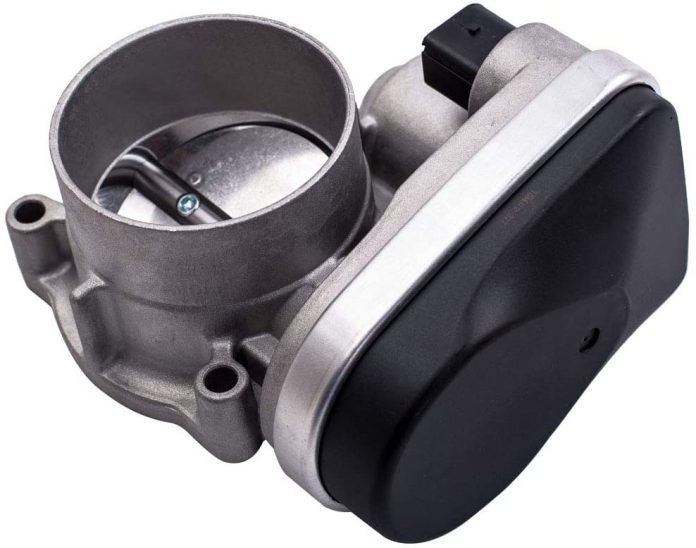

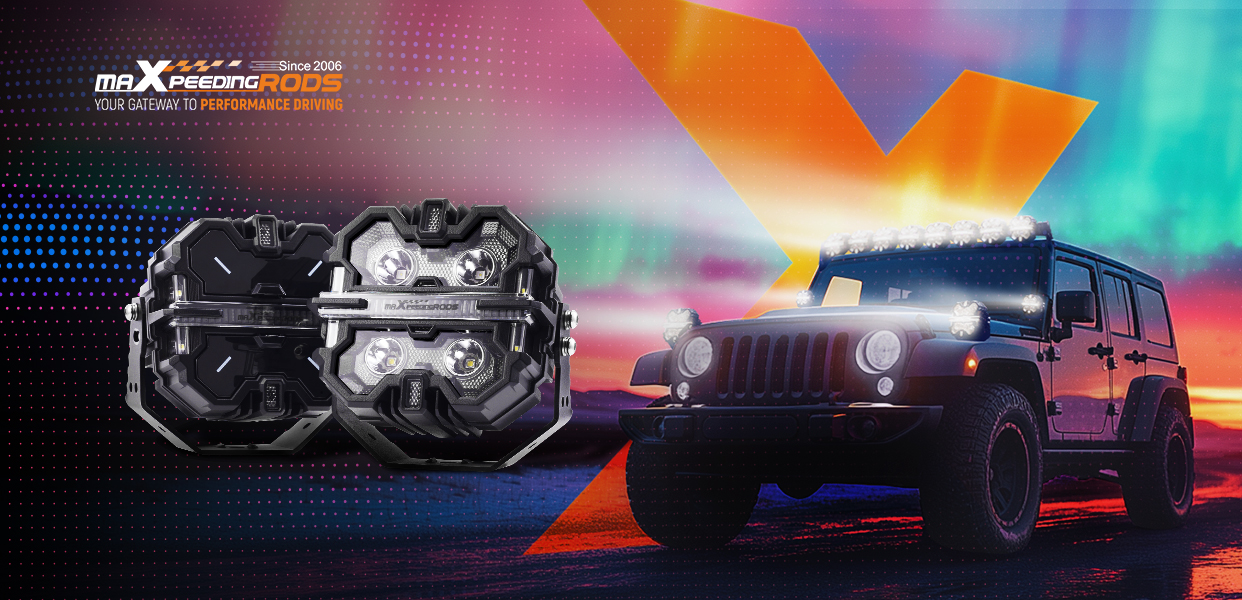


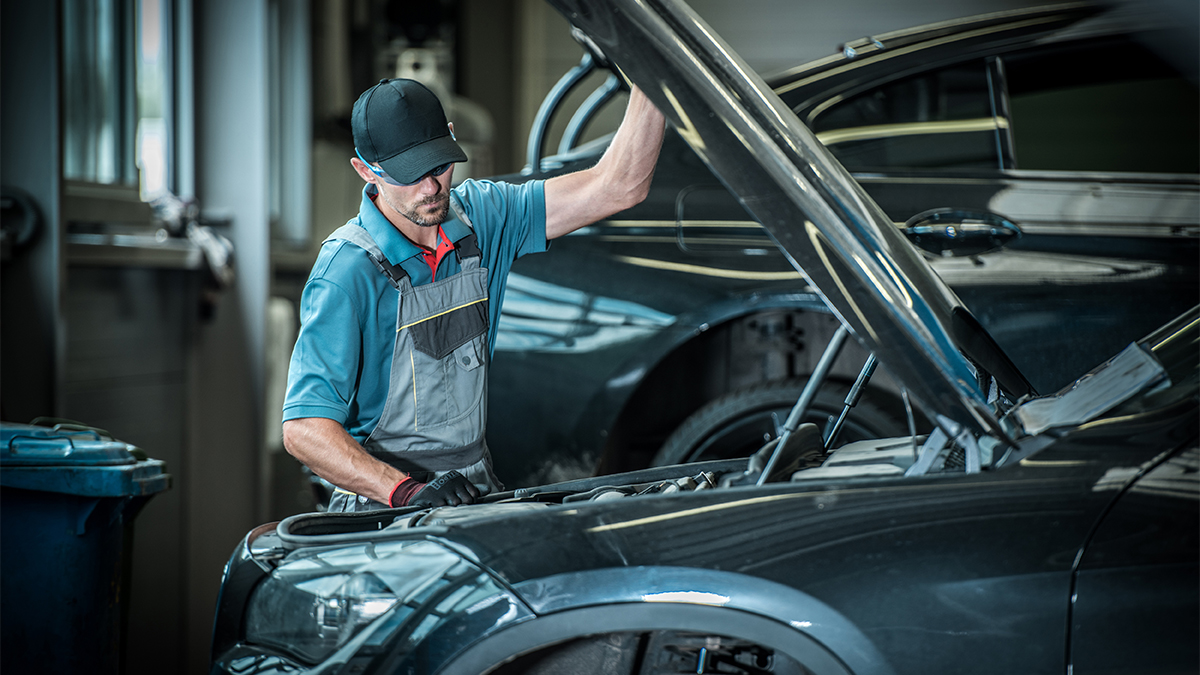
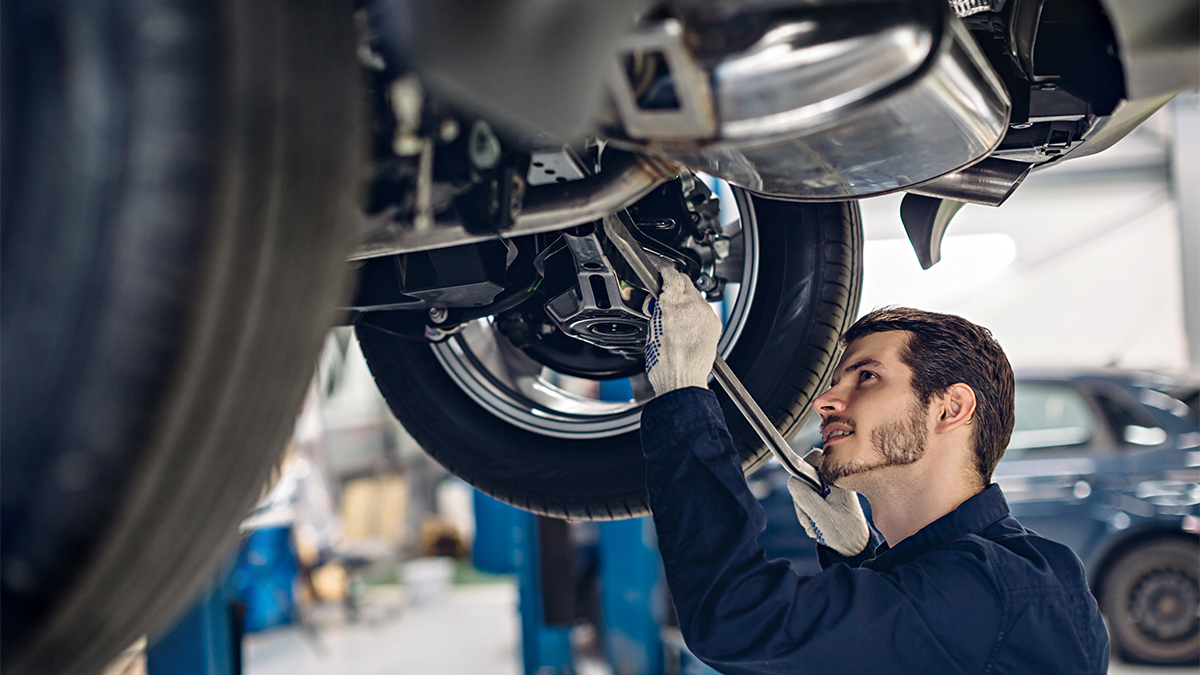


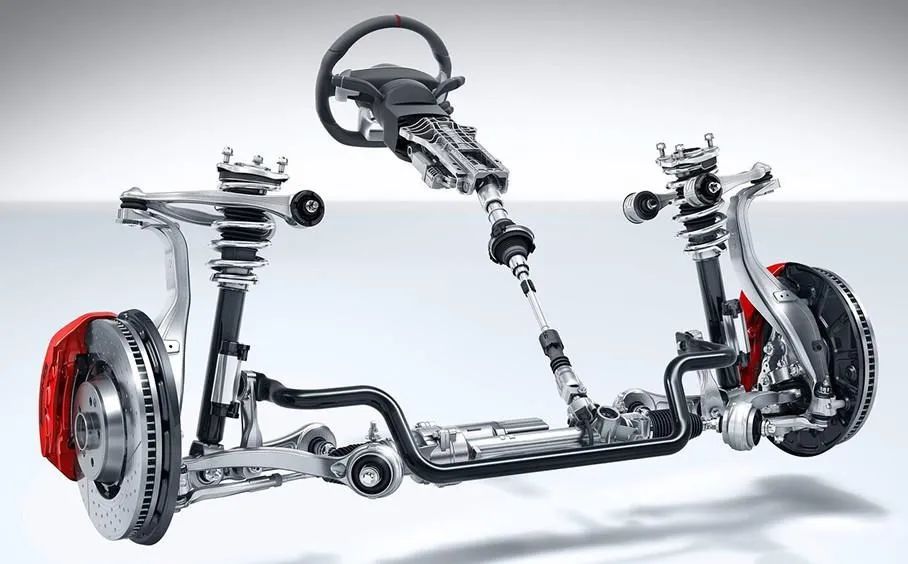
good to know